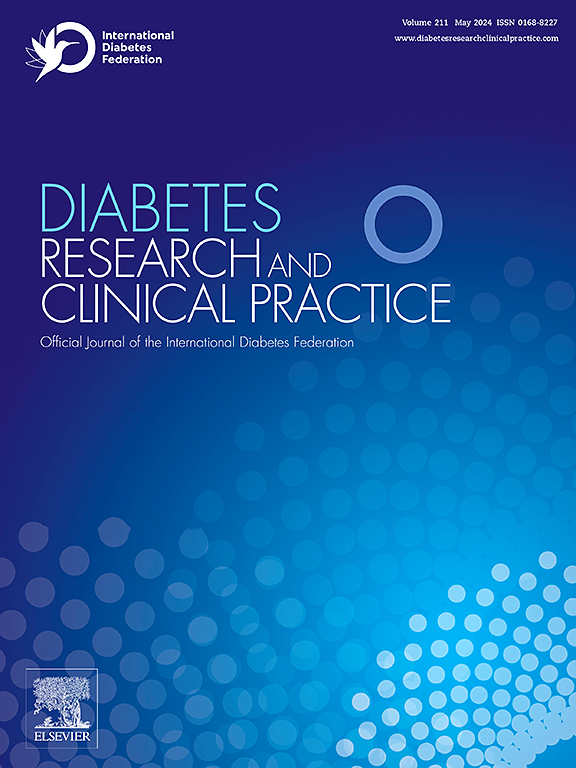The impact of glucagon-like peptide-1 receptor agonist on the gastric residue in upper endoscopy
IF 6.1
3区 医学
Q1 ENDOCRINOLOGY & METABOLISM
引用次数: 0
Abstract
Aim
We aimed to investigate the association between Glucagon-like-peptide-1 receptors agonists (GLP1-RA) use and gastric residue on esophagogastroduodenoscopy (EGD).
Methods
A multicenter, retrospective study included all EGDs conducted across seven gastroenterology departments. EGDs with the diagnosis of “poor preparation” or described as a poor preparation in the endoscopist’s report were considered as gastric residue.
Results
120,879 EGDs were included in the analysis. Of these, 1671 patients treated with GLP1-RA were compared to 119,208 without GLP1-RA treatment. Of the GLP1-RA group, 93 (5.6 %) had gastric residue compared to 2327 (2.0 %) among the non-GLP1-RA group (p < 0.001). Sup-group analysis: 71 (6.2 %) of the 1141 DM patients treated with GLP1-RA compared to 307 (3.0 %) of the 10,152 DM patients without GLP1-RA treatment (p < 0.001). Additionally, 22 (4.2 %) of 503 non-DM patients treated with GLP1-RA had gastric residue compared to 2065 (2.0 %) of the non-DM non-GLP1-RA group (n = 109,056) (p < 0.001). In multivariate analysis, DM and GLP1-RA were both found to be independent risk factors for excess gastric residue.
Conclusion
Our results may have important clinical relevance for EGD preparation among GLP1-RA treated patients, either requiring a longer fasting time prior to EGD or holding the medication prior to EGD according to the half-life of the drug.
胰高血糖素样肽-1 受体激动剂对上消化道内窥镜检查中胃残留物的影响。
目的:我们旨在研究胰高血糖素样肽-1受体激动剂(GLP1-RA)的使用与食管胃十二指肠镜检查(EGD)胃残留物之间的关系:这项多中心回顾性研究纳入了七家消化内科进行的所有胃肠镜检查。诊断为 "准备不良 "或在内镜医师报告中描述为准备不良的胃肠镜检查被视为胃残留:分析共纳入 120,879 例胃肠造影检查。其中,1671 名接受 GLP1-RA 治疗的患者与 119 208 名未接受 GLP1-RA 治疗的患者进行了比较。在 GLP1-RA 组中,93 人(5.6%)有胃残留,而在非 GLP1-RA 组中,有 2327 人(2.0%)有胃残留(P 结论:我们的结果可能与胃癌的临床治疗有重要关系:我们的研究结果可能对接受 GLP1-RA 治疗的患者进行胃肠造影术前准备具有重要的临床意义,根据药物的半衰期,胃肠造影术前需要延长空腹时间或暂停用药。
本文章由计算机程序翻译,如有差异,请以英文原文为准。
求助全文
约1分钟内获得全文
求助全文
来源期刊

Diabetes research and clinical practice
医学-内分泌学与代谢
CiteScore
10.30
自引率
3.90%
发文量
862
审稿时长
32 days
期刊介绍:
Diabetes Research and Clinical Practice is an international journal for health-care providers and clinically oriented researchers that publishes high-quality original research articles and expert reviews in diabetes and related areas. The role of the journal is to provide a venue for dissemination of knowledge and discussion of topics related to diabetes clinical research and patient care. Topics of focus include translational science, genetics, immunology, nutrition, psychosocial research, epidemiology, prevention, socio-economic research, complications, new treatments, technologies and therapy.
 求助内容:
求助内容: 应助结果提醒方式:
应助结果提醒方式:


